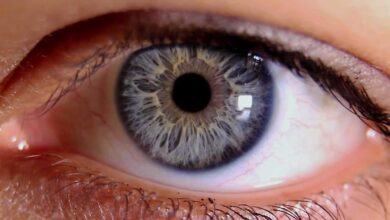Does Art Therapy Really Work?

Art therapy is a fascinating and innovative approach that utilizes the power of creativity and self-expression to promote healing and emotional well-being. This form of therapy has gained significant attention in recent years, with many people wondering, “Does art therapy really work?” In this article, we will delve into the world of art therapy, exploring its effectiveness, benefits, and the science behind its success. This article is provided by anxietyfightersguide.com
What is Art Therapy?
Art therapy is a therapeutic technique that involves using various art forms, such as drawing, painting, sculpting, and crafting, to encourage self-discovery, emotional release, and healing. This form of therapy is facilitated by licensed art therapists who have expertise in both mental health and creative processes.
The Power of Creative Expression
One of the most effective ways to discover what is art therapy is by understanding its core principles. Art therapy believes that creative expression can provide a safe and non-verbal outlet for emotions and thoughts. Through art, individuals can explore their feelings, memories, and experiences, even those that might be difficult to articulate verbally.
How Does Art Therapy Work?
Art therapy sessions typically involve providing individuals with art materials and a supportive environment. Clients are encouraged to create art freely, without judgment or expectations. The focus is on the process rather than the end product. Art therapists may provide prompts or themes, but the interpretation is entirely up to the individual.
Tapping into the Subconscious
Art therapy operates on the belief that the creative process can access the subconscious mind. The artwork created can reveal hidden emotions, unresolved traumas, and inner conflicts, helping individuals gain insights into their own psyche.
Enhancing Emotional Resilience
By engaging in art therapy, individuals can learn to identify and cope with their emotions effectively. It can help in reducing stress, anxiety, and depression, and promote emotional resilience and well-being.
The Benefits of Art Therapy
Art therapy has been found to offer numerous benefits for individuals of all ages, including children, adolescents, and adults.
1. Self-Exploration and Insight
Through art therapy, individuals can explore their thoughts and emotions in a safe and non-threatening manner. This self-exploration can lead to greater self-awareness and insight into their own behavioral patterns.
2. Stress Reduction
The creative process of art-making can be inherently soothing and meditative, promoting relaxation and reducing stress levels.
3. Emotional Release
Art therapy provides a healthy outlet for emotions, allowing individuals to express and release feelings that may be difficult to put into words.
4. Enhancing Communication
For individuals who struggle with verbal communication, art therapy can be a valuable alternative for expressing themselves and communicating their thoughts and emotions.
5. Fostering Empowerment
The act of creating art can instill a sense of accomplishment and empowerment, boosting self-esteem and confidence.
6. Resolving Trauma and PTSD
Art therapy has shown promise in helping individuals process and heal from traumatic experiences, including those suffering from post-traumatic stress disorder (PTSD).
7. Improving Interpersonal Skills
Art therapy in group settings can improve social and interpersonal skills, encouraging individuals to connect with others and build a sense of community.
The Science Behind Art Therapy
The effectiveness of art therapy is supported by scientific research. Studies have shown that engaging in creative activities can trigger the release of dopamine, a neurotransmitter associated with pleasure and reward. This neurological response can lead to improved mood and reduced anxiety.
Additionally, brain imaging studies have indicated that art-making can activate various regions of the brain involved in emotion, memory, and self-reflection. These findings further validate the therapeutic potential of art therapy.
Conclusion
Art therapy is much more than just an artistic pastime; it is a powerful therapeutic tool that can bring about profound changes in individuals’ lives. Through creative expression, emotional release, and self-exploration, art therapy offers a unique and effective approach to healing and personal growth. So, does art therapy really work? The resounding answer is yes. It has the potential to transform lives and help individuals navigate the complexities of their inner worlds, leading to a happier and healthier existence.
FAQs About Art Therapy
- Is art therapy suitable for everyone?
Art therapy is generally considered suitable for people of all ages, backgrounds, and abilities. It can be particularly beneficial for individuals dealing with emotional challenges, trauma, or seeking personal growth.
- Can you participate in art therapy without any artistic skills?
Absolutely! Art therapy is not about producing a masterpiece but rather about self-expression. The process is what matters, not the artistic skills.
- How many sessions of art therapy are needed to see results?
The number of art therapy sessions required to see results can vary depending on the individual and their goals. Some may experience benefits after just a few sessions, while others may need more time.
- Is art therapy a substitute for traditional talk therapy?
Art therapy can be used as a complement to traditional talk therapy, and in some cases, it may be the primary therapeutic approach. The choice depends on the individual’s needs and preferences.
- Can children benefit from art therapy?
Yes, art therapy can be highly beneficial for children, as it provides them with a non-verbal means of expressing their feelings and emotions. It can help children cope with challenges and develop emotional resilience.




